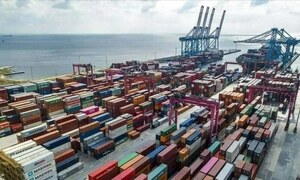Intel held the second of two-year end sessions on Thursday. The year-end sessions recapped key moments from 2014 and a look ahead at predictions for the coming year. Naveed Siraj said that it has been another breakthrough year for Intel and the IT industry as a whole, with the Asia Pacific and Japan region being a major driver for significant change.
With advancements in technology across all IT - from mobile devices and Internet of Things (IoT) to backend IT infrastructures - the rapid pace of innovation will continue into 2015. Intel is ushering in the age of integration, a time when technology and computational power will no longer be an adjunct to our daily lives, but an integral, immersive and all-encompassing part.
Kicking off 2014 at CES, Intel CEO Brian Krzanich challenged the company to have its chips in 40 million tablets in 2014 - an increase of 30 million compared to 2013. Intel had shipped more than 30 million tablets by Q3'14, was tracking more than 250 tablet designs in over 150 countries, and was ranked by Strategy Analytics as the number two application processor vendor for tablets.
Intel continued to deliver benefits of the Moore's Law through its investments in leading-edge capacity, making higher performance, more energy-efficient, denser and cost-effective solutions available to an ever-broader set of market segments. This resulted in delivering the world's first 14nm technology in volume production ahead of the competition. Intel's 14nm technology will be used to manufacture a wide range of high-performance to low-power products including servers, personal computing devices and IoT.
Innovating in chips across all mobile form factors, Intel delivered enhanced performance, battery life and features, as well as lightweight designs for a range of mobile form factors that includes PCs, laptops, Ultrabooks including the first systems based on the new Intel Core M processors.-PR
BR100
11,841
Decreased By
-24.6 (-0.21%)
BR30
35,821
Increased By
124.3 (0.35%)
KSE100
113,789
Decreased By
-359.4 (-0.31%)
KSE30
35,833
Decreased By
-119.3 (-0.33%)

























Comments
Comments are closed.